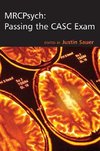
Pharmacology
Source: Wikipedia. Pages: 179. Chapters: Benzodiazepine, Placebo, Fine chemical, Benzodiazepine withdrawal syndrome, Long-term effects of benzodiazepines, Pharmaceutical industry, Benzodiazepine dependence, Food and Drug Administration, Clinical trial, Medical... Viac o knihe
Produkt je dočasne nedostupný
35.29 €
bežná cena: 40.10 €
O knihe
Source: Wikipedia. Pages: 179. Chapters: Benzodiazepine, Placebo, Fine chemical, Benzodiazepine withdrawal syndrome, Long-term effects of benzodiazepines, Pharmaceutical industry, Benzodiazepine dependence, Food and Drug Administration, Clinical trial, Medical prescription, Discovery and development of mTOR inhibitors, Discovery and development of thalidomide and its analogs, Alcohol withdrawal syndrome, Serotonin syndrome, Environmental impact of pharmaceuticals and personal care products, Tablet (pharmacy), Gu (poison), Placebo-controlled study, Polysubstance dependence, Materia medica, Drug design, Pharmaceutical drug, Reward dependence, Psychopharmacology, Receptor antagonist, Quantitative structure-activity relationship, Drug discovery, Neuropsychopharmacology, Off-label use, Nocebo, Pharmacognosy, Pharmacogenetics, Syed Ziaur Rahman, Personalized medicine, Plateau principle, Releasing agent, Pharmacokinetics, Reuptake inhibitor. Excerpt: A benzodiazepine (sometimes colloquially "benzo"; often abbreviated "BZD") is a psychoactive drug whose core chemical structure is the fusion of a benzene ring and a diazepine ring. The first benzodiazepine, chlordiazepoxide (Librium), was discovered accidentally by Leo Sternbach in 1955, and made available in 1960 by Hoffmann-La Roche, which has also marketed diazepam (Valium) since 1963. Benzodiazepines enhance the effect of the neurotransmitter gamma-aminobutyric acid (GABA-A), resulting in sedative, hypnotic (sleep-inducing), anxiolytic (anti-anxiety), anticonvulsant, and muscle relaxant properties; also seen in the applied pharmacology of high doses of many shorter-acting benzodiazepines are amnesic-dissociative actions. These properties make benzodiazepines useful in treating anxiety, insomnia, agitation, seizures, muscle spasms, alcohol withdrawal and as a premedication for medical or dental procedures. Benzodiazepines are categorized as either short-, intermediate- or long-acting. Short- and intermediate-acting benzodiazepines are preferred for the treatment of insomnia; longer-acting benzodiazepines are recommended for the treatment of anxiety. In general, benzodiazepines are safe and effective in the short term, although cognitive impairments and paradoxical effects such as aggression or behavioral disinhibition occasionally occur. Long-term use is controversial due to concerns about adverse psychological and physical effects, increased questioning of effectiveness and because benzodiazepines are prone to cause tolerance, physical dependence, and, upon cessation of use after long term use, a withdrawal syndrome. Due to adverse effects associated with the long-term use of benzodiazepines, withdrawal from benzodiazepines, in general, leads to improved physical and mental health. The elderly are at an increased risk of suffering from both short- and long-term adverse effects. Withdrawal from a long term benzodiazepine addiction may cause tinnitus as a side ef
- Vydavateľstvo: Books LLC
- Formát: Paperback
- Jazyk:
- ISBN: 9781151015983



 Anglický jazyk
Anglický jazyk 








